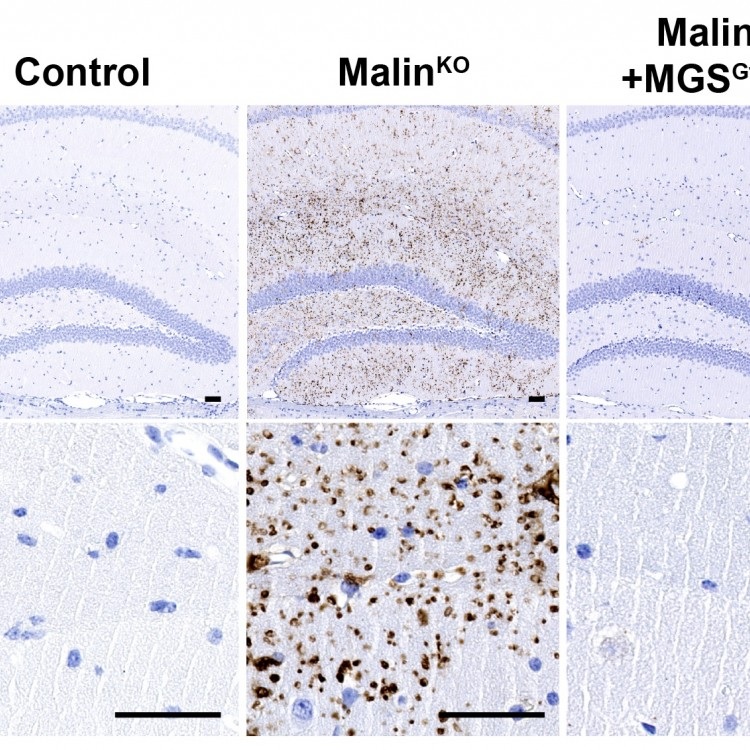Researchers find the cause of degeneration in Lafora disease

Lafora disease is an inherited neurodegenerative disease which is initially developed with epileptic crises during adolescence and it evolves with a progressive degeneration of the nervous system until it causes death after ten years of its first onset. It is featured by the accumulation of abnormal aggregates of glycogen known as Lafora bodies in the brain. Although there are some therapies under clinical trial phases, there is not a treatment against the pathology yet.

Lafora disease is an inherited neurodegenerative disease which is initially developed with epileptic crises during adolescence and it evolves with a progressive degeneration of the nervous system until it causes death after ten years of its first onset. It is featured by the accumulation of abnormal aggregates of glycogen known as Lafora bodies in the brain. Although there are some therapies under clinical trial phases, there is not a treatment against the pathology yet.
Lafora bodies accumulated in glial cells -essential cells for the functioning of the nervous system- are responsible for the disease-related neurodegeneration, according to the study carried out by the Metabolic Engineering lab at IRB Barcelona, led by Joan Guinovart, emeritus professor at the Faculty of Biology of the University of Barcelona and head of the Diabetes and Associated Metabolic Diseases Networking Biomedical Research Centre (CIBERDEM).
For this study, published in the journal Brain, the team led by Guinovart created a mouse model with Lafora disease, in which researchers prevented glycogen from accumulating in glial cells. Thus, they found that these mice did not develop neurodegeneration. “For years, it was believed that the disease was caused by the accumulations of Lafora bodies in neurons only, but now we have shown that neurodegeneration is caused by accumulations in glial cells”, notes researcher Jordi Duran, codirector of the study.
“This discovery has important implications for the design of treatments for Lafora disease. We will now try to do research on the mechanism by which the glycogen deposits cause this damage. We will also study the potential role of this pathological mechanism in other neurodegenerative diseases”, adds Duran.
Other participants in the study are the experts from the laboratories of Professor José Antonio del Río, from the Faculty of Biology, the Institute of Neurosciences of the UB (UBNeuro) and the Institute for Bioengineering of Catalonia, and professor Matthew Gentry, from the University of Kentucky College of Medicine (United States).
